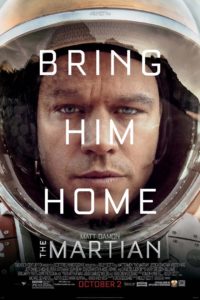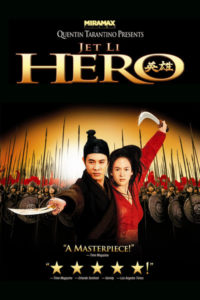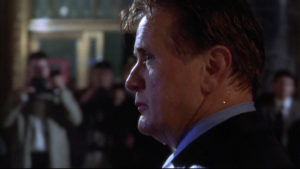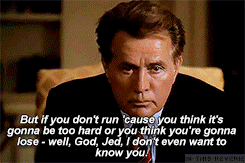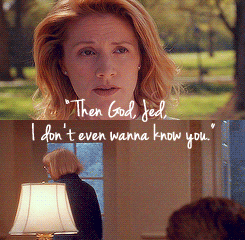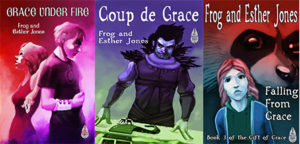 I’ve heard the advice that, when possible, it’s a great idea to add a romance subplot to your story. I’m not talking about romance as a genre–a genre that I’ve published in–in which the developing relationship between two characters is the focus of the plot. I’m talking about stories in which the heroes are in pursuit of another goal and just happen to fall in love with one another along the way.
I’ve heard the advice that, when possible, it’s a great idea to add a romance subplot to your story. I’m not talking about romance as a genre–a genre that I’ve published in–in which the developing relationship between two characters is the focus of the plot. I’m talking about stories in which the heroes are in pursuit of another goal and just happen to fall in love with one another along the way.
Well…
Sometimes it’s a great idea, and sometimes it’s not.
Quick, think of your favourite onscreen romance. Your “canon ship,” if you will. (For those not in fandom = “Ship” means “relationship,” and “canon” means it actually appeared in the source material….because creators of transformative works will happily develop relationships between characters who never even meet in the source material…)
Who have you got?
Han Solo and Princess Leia?
Robin Hood and Maid Marian?
Korra and Asami?
 These are examples of romance being a great addition to the story. Plenty of readers who would never pick up a “romance” story enjoy the interpersonal dynamics and the fantasy of falling in love taking place alongside the epic adventure. Romance adds another level of appeal, and the more appeal, the better when you’re trying to sell a story.
These are examples of romance being a great addition to the story. Plenty of readers who would never pick up a “romance” story enjoy the interpersonal dynamics and the fantasy of falling in love taking place alongside the epic adventure. Romance adds another level of appeal, and the more appeal, the better when you’re trying to sell a story.
But we can all list examples of romance being done poorly.
Stories where “romance” is replaced by a sex scene – the kind that doesn’t contribute to the story. I’m sure many of us have waited through “this is the part where they have sex, because of course they do. Hurry up and get back to the real story.”
Stories where “romance” takes place between two characters that have no chemistry, no reason to be interested in one another, save for the fact that the “romance” box on the writer’s checklist needs ticking.
Stories where one character–often but not always the female character–exists solely to be a love interest for another character, and has little personality beyond “X’s girlfriend/wife/etc.”
Stories where an interesting female character suddenly becomes “weakened”and falls in love with the “Mr Average” leading man, who saves the day (does anyone have examples of a male character falling victim to this? Female examples include the Lego Movie, the Matrix, All You Need is Kill/Edge of Tomorrow…)
And worst of all, stories where romance runs counter to the themes and ideas in the story.
Mad Max: Fury Road was a breath of fresh air to me and many other people in that its lead characters, Max and Furiosa, are a man and a woman who…don’t fall in love! Their relationship develops from adversarial (Furiosa has gone rogue to rescue five women who’ve been held in sexual servitude, and she fears Max is an obstacle to her success; Max just wants to live and will go through whoever he has to) to mutual respect, friendship, and, yes, affection…but nowhere is there any hint of romance. Indeed, Furiosa’s position as a woman in a leadership role in a patriarchal community has interesting implications as to what her views of sexuality, gender, and relationships must be, given the society in which she lives (and in contrast to the society she was born into, which has flaws of its own). To try to shoehorn in a romance with Max (who is suffering from mental illness and also struggling to define his role in society) would not have fit this story whatsoever.
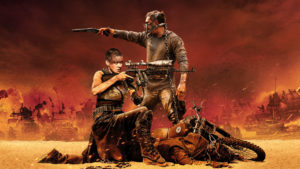 This is not to say that romance has “cooties”. There’s an obvious relationship between Warboy Nux and ex-breeder Capable, but whether this is “romance” or a more innocent sort of childlike affection between two emotionally stunted people is open to interpretation. Mad Max doesn’t shy away from deep emotion and vulnerability. It does show that romance and sex are not the only ways to show emotion and vulnerability in relationships between men and women.
This is not to say that romance has “cooties”. There’s an obvious relationship between Warboy Nux and ex-breeder Capable, but whether this is “romance” or a more innocent sort of childlike affection between two emotionally stunted people is open to interpretation. Mad Max doesn’t shy away from deep emotion and vulnerability. It does show that romance and sex are not the only ways to show emotion and vulnerability in relationships between men and women.
Pacific Rim is another excellent example of a movie where a male and female soldier work together to accomplish a dangerous mission. There’s no doubt that Raleigh and Mako are very close, emotionally–they wouldn’t be able to fight together in their robot without a deep connection. But there’s no sex and not even so much as a kiss between them in the movie itself. Are they in romantic love, or are they comrades-in-arms? The movie doesn’t answer this question, and doesn’t need to. In this case, open-ended ambiguity lets viewers imagine a romance, or not, as they choose–whichever is more meaningful to the viewer. Some viewers will want the romance fantasy; others will want affirmation of closeness without romance. Unlike Mad Max: Fury Road, where it’s important that Furiosa and Max not be romantically involved, Pacific Rim benefits from an ambiguous relationship that can be what the viewer wants it to be.
In real life, plenty of us interact with people of the opposite gender who we aren’t 1.) related to, 2.) sexually involved with, or 3.) romantically attracted to. Yet so many stories focus on romance to the exclusion of other types of relationships. The result is stories that don’t reflect the full human experience, and a skewed depiction of romance as the be-all and end-all of relationships.
Romance has a wide appeal, but there are some stories that don’t benefit from romance. These include: stories with asexual and aromantic lead characters (people who do not experience sexual or romantic attraction)…characters who are equally worthy of being heroes with their own stories. Stories with lead characters who are at points in their lives where they are not ready for romantic relationships (Furiosa, Max). Stories in which a man and a woman work closely together, risk their lives together, would do anything for one another…but whose “love” need not be romantic love.
In some stories romantic love will make sense for the characters, the plot and the setting. In some stories, it won’t. While there will always be a market for a good old-fashioned love story, I believe that audiences also want to see other kinds of relationships on the big screen, the small screen, and in the stories they read.

